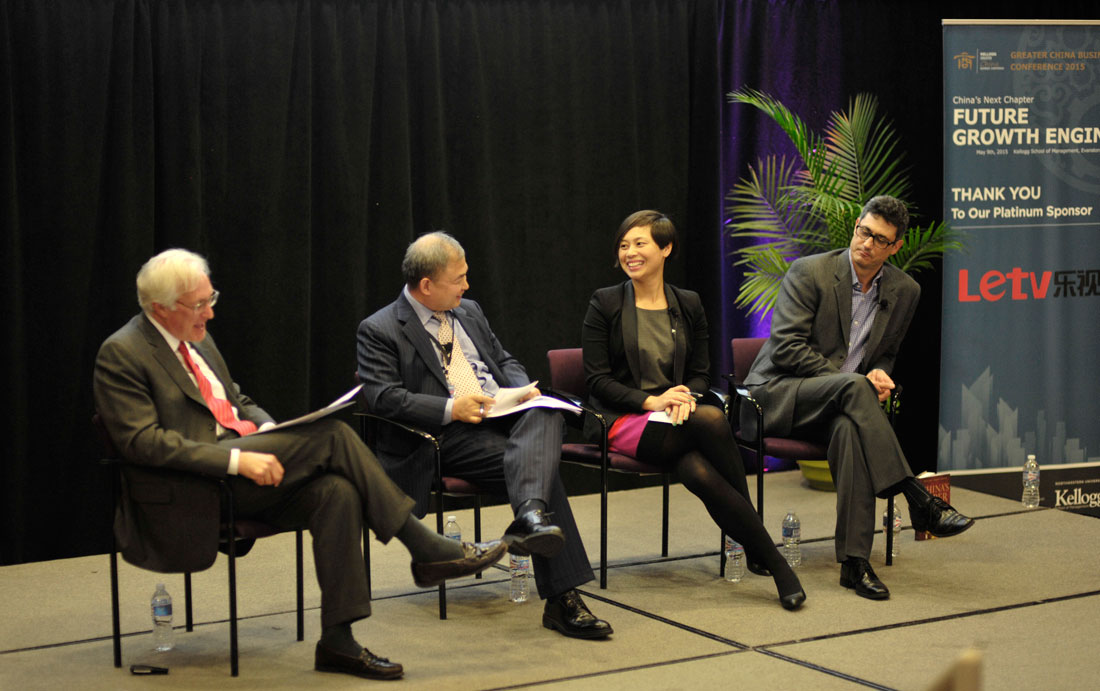By Yimian Wu
Experts characterize China’s vast wave of “super consumers” as emerging middle class, aging customers and active e-commerce users.
As China is shifting from an investment-fueled economy to a consumption-driven economy, understanding consumer behavior is key to developing the right strategy to tap into the large consumer base, the experts said in a conference at Northwestern University’s Kellogg School of Management in Evanston on Saturday.
“It’s super consumers because there are 800 million consumers. They are changing the way China looks and feels,” explained Michael Zakkour, vice president at Tompkins International, a global business consulting firm.
He said China developed its first “small elite group of consumers” with disposable income during its economic reform in the 1980s, then the number of consumers grew to about 400 million from 2000 to 2010 and finally exploded to 800 million in the past five years.
Calling the growing middle class a “new phenomenon” in China. Feng Xue, head of China practice at the Chicago-based law firm Katten Muchin, said, “When I grew up, there was no middle class. Everybody is poor and equally poor.” He also said that China’s middle class like to show off and are willing to pay premiums to buy goods that show their differences.
Zakkour also noted that consumers in smaller cities are catching up. He said sales of Louis Vuitton bags have dropped in Beijing and Shanghai but increased in Chengdu and Chongqing, major cities in southwest China.
But Xue also warned about the “aging problem.” “We call it six versus one: six adults, grandparents from both sides and parents are supporting one kid. So the kid has all the money to spend. But years later, the one kid has to support the grandparents and the parents.”
The aging consumers actually created a puzzle for Walt Disney Co. in Hong Kong, according to Zakkour. He said Disney brought its U.S. amusement park operating strategy to Hong Kong but it failed as its survey found that many consumers had “awful” experiences there.

He said that on average there are 2.2 adults with each youngster going to Disney parks in the U.S. while there are six adults accompanying one child to Disney in Hong Kong. And people like to travel with their friends, so on average, two families with 12 adults and two kids go to Disney in China, Zakkour stated.
He explained that the large number of adults not only creates a crowd but stops the traffic flow in restaurants in the park. Usually the adults take turns to do activities with the kids, with four adults playing in the park and two resting in the restaurants.
Disneyland Hong Kong opened in 2005 and Disney plans to open its Shanghai park in first half of 2016, according to the Wall Street Journal.
Facing the growing e-commerce, Winnie Wang, associate marketing director at Procter & Gamble Co, emphasized understanding the needs of consumers. “Even e-commerce is growing fast but what e-commerce is selling? Are they selling e-commerce? No, they are selling things,” she said.
Having the “right contents, right assortments and right reviews” to suit consumers’ needs is what she suggested. She said that when Procter & Gamble first entered the Chinese market, it captured the need of improving consumers’ confidence. So instead of launching laundry products, it first launched skin care and hair care products.
However, facing the challenge of e-commerce, she said, traditional retailers need to “embrace the change” and use data and insight to generate differentiated experience.



